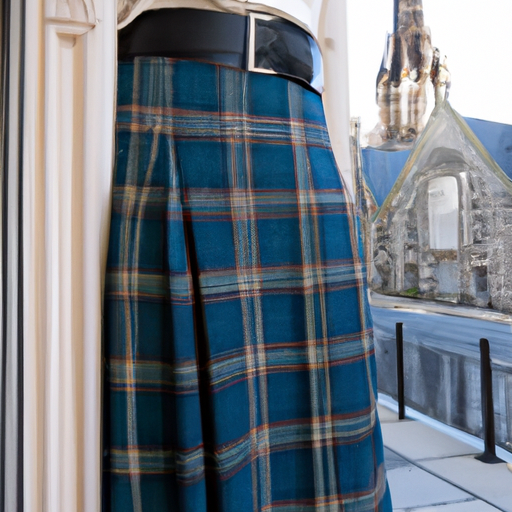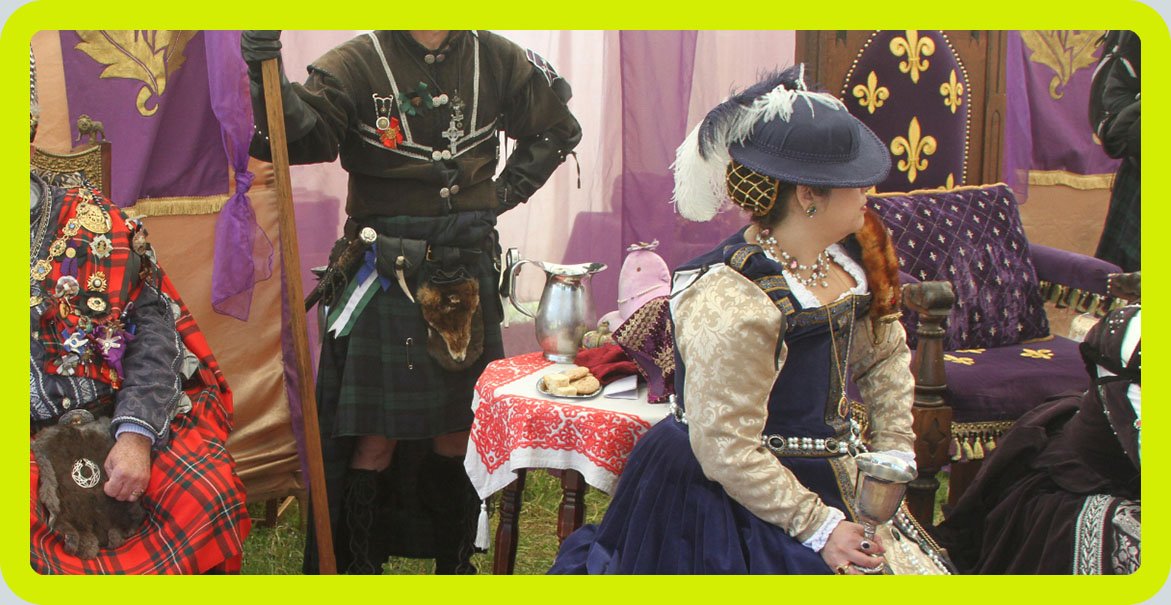Let’s take you on a brief journey through time, shedding light on the fascinating history and cultural significance of Kilts, Celtic dress, and Tartan. From the Kilts humble beginnings as a practical garment for Scottish Highlanders, to their now iconic status, Kilts have seen a remarkable evolution in both style and use.
Discover how these traditional garments have adapted and transformed over the ages, reflecting shifts in society, fashion, and even political identities. Whether you’re a history enthusiast or simply curious about the origin of this iconic attire, this article will provide a captivating exploration of the journey that Kilts have undertaken throughout the centuries.
Origins of the Kilt
The origins of the Kilt can be traced back to ancient Celtic culture. The Celts, who inhabited Scotland and other parts of Europe in the Iron Age, had their own distinctive style of clothing. However, the Kilt as we know it today did not exist during this time.
The development of the primitive Kilt, also known as the ‘feileadh mor’, began to take shape around the 16th century. It was a long piece of fabric that was belted around the waist and draped over the shoulder. This garment provided protection from the harsh Scottish weather and allowed for ease of movement.
Changes in Kilt Design Over Time
Over the centuries, the design of the Kilt underwent significant changes. The introduction of the modern-style Kilt occurred in the 18th century and marked a departure from the previous style. This new Kilt consisted of a tailored garment that had pleats at the back and was fastened with a belt around the waist.

Another noticeable change in the design of the Kilt was the reduction in size and length. The early Kilt was a full-length garment that reached down to the ankles, but as fashion evolved, the length gradually shortened to the knees. This alteration made the Kilt more practical for everyday wear.

In addition to changes in size and length, the tartan patterns used in Kilts also evolved over time. Tartan, a pattern consisting of intersecting horizontal and vertical stripes, is an integral part of Scottish culture. Different tartan patterns were associated with specific clans, families, and regions, serving as a symbol of identity and belonging.
The Kilt in Military Use
The Kilt has a long history of being utilized in military contexts, particularly in Highland regiments. The Royal Highlanders (Black Watch), formed in the 18th century, were one of the first military units to adopt the Kilt as part of their official uniform. The Kilt served practical purposes on the battlefield, allowing soldiers to move more freely while providing protection and alleviating the effects of weather conditions.
Beyond its practicality, the Kilt also held great symbolism and significance in military use. It represented a connection to Scottish heritage and the proud warrior traditions of the Highlands. The sight of a Highland regiment in full Kilted regalia inspired a sense of awe, both among their own ranks and their adversaries.
However, the Kilt’s prominence in military use experienced a decline during the 19th and early 20th centuries. As military uniforms became more standardized, the Kilt was gradually phased out in favor of more practical and uniform attire. Despite this decline, there has been a resurgence of Kilts in the military context, particularly in ceremonial and formal occasions.
Regulation of Kilts and Tartan
In 1746, the Act of Proscription was implemented following the Jacobite Rebellion. This act sought to suppress Scottish Highland culture, including the wearing of Kilts and the display of tartan patterns. The aim was to assimilate the Highlanders into British society and quell any signs of rebellion.
The Act of Proscription had a profound impact on the wearing of Kilts and tartan. For nearly four decades, wearing Highland dress was illegal, and those who defied the act faced severe penalties. The suppression of Kilts and tartan patterns caused a decline in their popularity and led to a shift towards more English-style fashion.
Eventually, the Act of Proscription was repealed in 1782, leading to the rise of the Kilt as a symbol of Scottish national dress. The repeal allowed for the revival of traditional Highland culture, and Kilts and tartan patterns regained their popularity among the Scottish population.
Influence of British Royals on Kilt Fashion
Queen Victoria and Prince Albert played a pivotal role in popularizing Kilts and tartans among the British aristocracy and beyond. During their visits to Scotland in the mid-19th century, they became enamored with Scottish culture and began incorporating Kilts into their wardrobes. Their adoption of the Kilt sparked a trend among the fashionable elite, and soon Kilts became a symbol of high fashion.
In the present day, the British royals continue to embrace and promote Scottish culture through their use of the Kilt. Prince Charles, in particular, is known for his fondness for Kilts and is often seen wearing them at formal events and Highland games. The royal family’s endorsement has contributed to the enduring popularity of Kilts as a symbol of Scottish heritage.
Kilt Use in Ceremonies and Festivals
Kilts play a significant role in Scottish weddings, where they are worn as part of traditional formal attire. The groom and his groomsmen often don Kilts, showcasing their Scottish roots and adding a touch of Scottish tradition to the wedding ceremony. Kilts in weddings are typically paired with other accessories, such as sporrans (a pouch-like bag worn with a Kilt) and Sgian-Dubhs (a small ceremonial knife).
Highland games and Celtic festivals are also occasions where Kilts are prominently featured. These events celebrate Scottish culture, showcasing traditional games, music, and dance. Participants and spectators alike often wear Kilts as a way to honor their heritage and demonstrate their connection to Scottish traditions.
Modern Variations and Utilitarian Adaptations
In modern times, Kilts have undergone contemporary alterations and adaptations, catering to changing fashion trends and practical needs. While traditional Kilts are still prevalent, there has been a rise in the popularity of utility Kilts. These Kilts incorporate functional elements, such as additional pockets, making them more practical for everyday wear.
Utility Kilts have gained traction not only among Scottish populations but also among individuals worldwide who appreciate the unique style and versatility of the garment. They offer a modern twist to the traditional Kilt while still paying homage to its cultural heritage.
Kilts as a Symbol of Scottish Identity

The Kilt holds immense significance in Scottish nationalism, symbolizing pride in Scottish heritage and cultural identity. Many Scots view the Kilt as a tangible representation of their roots and a way to honor their forefathers. Kilts are often worn during special events, national holidays, and important ceremonies, further cementing their role as an emblem of Scottish identity.
Beyond Scotland’s borders, Scottish diaspora cultures also embrace Kilts as a way to maintain a connection to their ancestral roots. Whether in Canada, Australia, or the United States, Scottish descendants proudly wear Kilts as a testament to their heritage and to celebrate their unique cultural identity.
Kilts in Women’s Fashion
While historically Kilts were predominantly worn by men, the inclusive nature of the Kilt-wearing tradition has seen a growing participation of women. Women now wear Kilts in various forms, including tartan skirts and dresses. These modern adaptations allow women to embrace Scottish style and incorporate it into their own fashion choices.
Tartan skirts and dresses often feature different tartan patterns, enabling women to express their familial or regional ties, just like their male counterparts. Kilts in women’s fashion have become a way for women to celebrate their Scottish heritage while also enjoying the stylish and elegant aspects of the garment.
The Future of the Kilt
As with any cultural artifact, the Kilt is not immune to the influence of global fashion trends. While traditional Kilts and their associated symbolism will continue to be cherished, there may be potential changes and developments in design to appeal to a wider audience.
In an increasingly interconnected world, the Kilt may continue to evolve to accommodate diverse cultural influences and technological advancements. However, its essence as a symbol of Scottish heritage and identity will likely remain at the core of its design and continued popularity.
Regardless of any potential changes, the Kilt will always hold a special place in Scottish culture, representing a deep-rooted connection to tradition, history, and a sense of belonging.
Whether worn for special occasions, military purposes, or simply as an expression of personal style, the Kilt will continue to be a timeless icon of Scottish identity… and still loved to this day.

